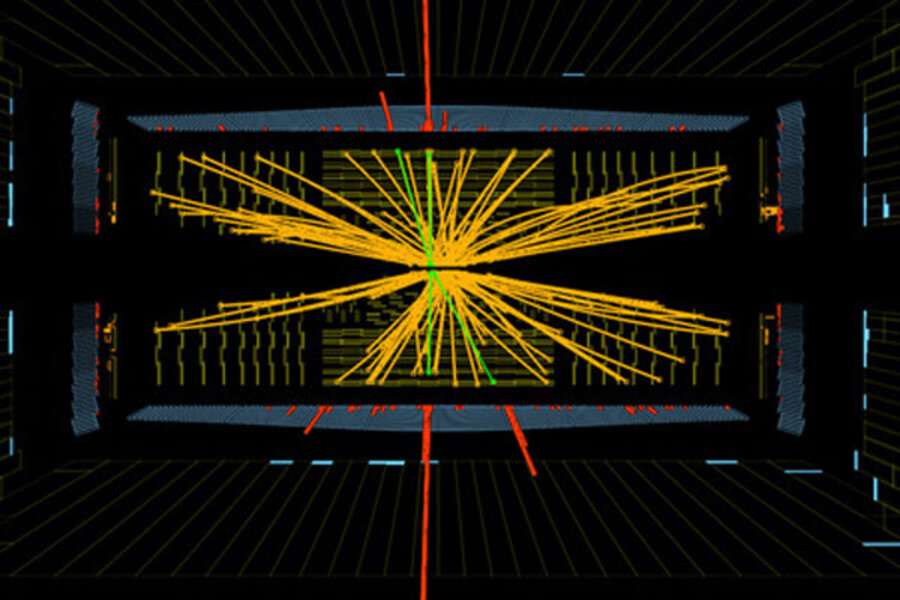Scientists confirm Higgs boson discovery
A newfound particle discovered at the world's largest atom smasher last year is, indeed, the Higgs boson, the particle thought to give other matter its mass, scientists reported today (March 14) at the annual Rencontres de Moriond conference in Italy.
Physicists announced on July 4, 2012, that, with more than 99 percent certainty, they had found a new elementary particle weighing about 126 times the mass of the proton that was likely the long-sought Higgs boson. The Higgs is sometimes referred to as the "God particle," to the chagrin of many scientists, who prefer its official name.
But the two experiments, CMS and ATLAS, hadn't collected enough data to say the particle was, for sure, the Higgs boson, the last undiscovered piece of the puzzle predicted by the Standard Model, the reigning theory of particle physics.
Now, after collecting two and a half times more data inside the Large Hadron Collider (LHC) — where protons zip at near light-speed around the 17-mile-long (27 kilometer) underground ring beneath Switzerland and France — physicists say the particle is the Higgs. [In Photos: Searching for the Higgs Boson]
"The preliminary results with the full 2012 data set are magnificent and to me it is clear that we are dealing with a Higgs boson though we still have a long way to go to know what kind of Higgs boson it is," said CMS spokesperson Joe Incandela in a statement.
Dave Charlton, ATLAS spokesperson agreed, the new results "point to the new particle having the spin-parity of a Higgs boson as in the Standard Model," referring to a quantum property of elementary particles.
To confirm the particle as the Higgs boson, physicists needed to collect tons of data that would reveal its quantum properties as well as how it interacted with other particles. For instance, a Higgs particle should have no spin and its parity, or the measure of how its mirror image behaves, should be positive, both of which were supported by data from the ATLAS and CMS experiments.
Even so, the scientists are not sure whether this Higgs boson is the one predicted by the Standard Model or perhaps the lightest of several bosons predicted to exist by other theories.
Seeing how this particle decays into other particles could let physicists know whether this Higgs is the "plain vanilla" Standard Model Higgs. Detecting a Higgs boson is rare, with just one observed for every 1 trillion proton-proton collisions. As such, the LHC physicists say they need much more data to understand all of the ways in which the Higgs decays.
From what is known about the particle now, physicists have said the Higgs boson may spell the universe's doom in the very far future. That's because the mass of the Higgs boson is a critical part of a calculation that portends the future of space and time. Its mass of 126 times the mass of the proton is just about what would be needed to create a fundamentally unstable universe that would lead to a cataclysm billions of years from now.
"This calculation tells you that many tens of billions of years from now there'll be a catastrophe," Joseph Lykken, a theoretical physicist at the Fermi National Accelerator Laboratory in Batavia, Ill., said last month at the annual meeting of the American Association for the Advancement of Science.
"It may be the universe we live in is inherently unstable, and at some point billions of years from now it's all going to get wiped out," added Lykken, a collaborator on the CMS experiment.
Follow LiveScience on Twitter @livescience, Facebook or Google+. Original article on LiveScience.com.
- Top 5 Implications of Finding the Higgs Boson
- Wacky Physics: The Coolest Little Particles in Nature
- Photos: The World's Largest Atom Smasher (LHC)
Copyright 2013 LiveScience, a TechMediaNetwork company. All rights reserved. This material may not be published, broadcast, rewritten or redistributed.





